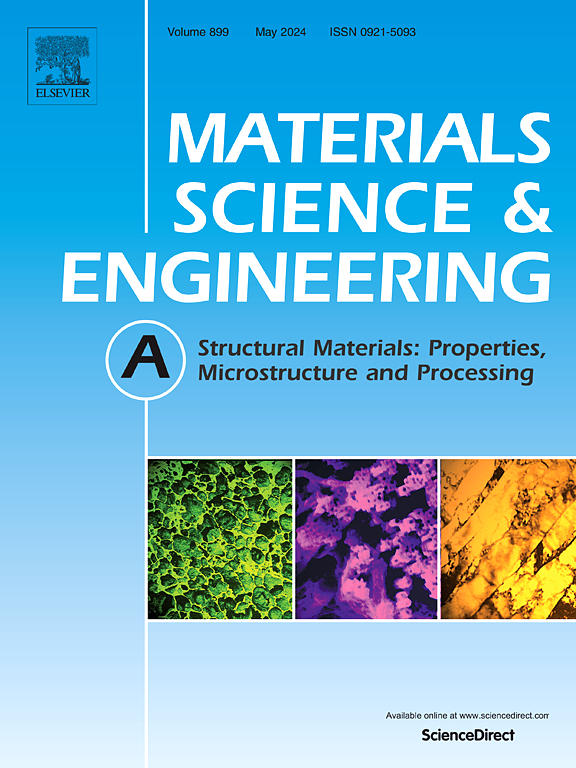AlxCoCrFeNi高熵合金的循环劣化机制
IF 6.1
2区 材料科学
Q1 MATERIALS SCIENCE, MULTIDISCIPLINARY
引用次数: 0
摘要
本研究通过考察AlxCoCrFeNi高熵合金的力学性能、表面形貌和显微组织的演变,探讨了循环纳米压痕下HEAs的循环劣化机制。随着铝含量的增加,这些HEAs的循环软化劣化行为和硬度增强都有不同的变形机制。对于Al0.1CoCrFeNi和Al0.3CoCrFeNi HEAs,循环软化行为归因于位错平面滑移、层错、变形孪晶和FCC相向BCC和HCP相转变。Al0.5CoCrFeNi HEA呈现复合区域劣化,BCC相区以位错塑性为主,FCC相区以层错和变形孪晶的协同作用为主,由FCC相和BCC相转变为HCP相。AlCoCrFeNi HEA的循环劣化包括位错主导的塑性、层错和从BCC相到HCP相的相变。此外,由于Al0.1CoCrFeNi HEA的硬度较低,而Al0.5CoCrFeNi HEA由于双相组织引起的不相容变形而出现了滑移线和堆积现象。强调了铝含量在控制相组成、塑性变形机制和力学性能方面的关键作用,对高性能HEAs的设计具有深远的意义。本文章由计算机程序翻译,如有差异,请以英文原文为准。
The cyclic deterioration mechanisms of AlxCoCrFeNi high-entropy alloys
This study delves into the cyclic deterioration mechanisms of AlxCoCrFeNi high-entropy alloys (HEAs) under cyclic nanoindentation by examining the evolution of mechanical properties, surface morphology and microstructures. With the increase of aluminum content, different deformation mechanisms are found responsible for the cyclic softening deterioration behavior and the hardness enhancement in these HEAs. For Al0.1CoCrFeNi and Al0.3CoCrFeNi HEAs, the cyclic softening behavior is attributed to dislocation planar slipping, stacking faults, deformation twinning and phase transformations from FCC phase to BCC and HCP phases. Al0.5CoCrFeNi HEA exhibits compound regional deterioration, with the BCC-phase region dominated by dislocation-dominated plasticity and the FCC-phase region dominated by the synergistic effects of stacking faults and deformation twinning, which undergoes phase transformations from FCC and BCC phases to HCP phase. The cyclic deterioration in AlCoCrFeNi HEA involves dislocation-dominated plasticity, stacking faults and phase transformation from BCC phase to HCP phase. Moreover, slip lines and pile-ups are observed only in Al0.1CoCrFeNi HEA due to the low hardness and Al0.5CoCrFeNi HEA due to incompatible deformation caused by dual-phase microstructure. The critical role of aluminum content in governing phase composition, plastic deformation mechanisms and mechanical properties is highlighted, with profound implications for designing high-performance HEAs.
求助全文
通过发布文献求助,成功后即可免费获取论文全文。
去求助
来源期刊

Materials Science and Engineering: A
工程技术-材料科学:综合
CiteScore
11.50
自引率
15.60%
发文量
1811
审稿时长
31 days
期刊介绍:
Materials Science and Engineering A provides an international medium for the publication of theoretical and experimental studies related to the load-bearing capacity of materials as influenced by their basic properties, processing history, microstructure and operating environment. Appropriate submissions to Materials Science and Engineering A should include scientific and/or engineering factors which affect the microstructure - strength relationships of materials and report the changes to mechanical behavior.
 求助内容:
求助内容: 应助结果提醒方式:
应助结果提醒方式:


